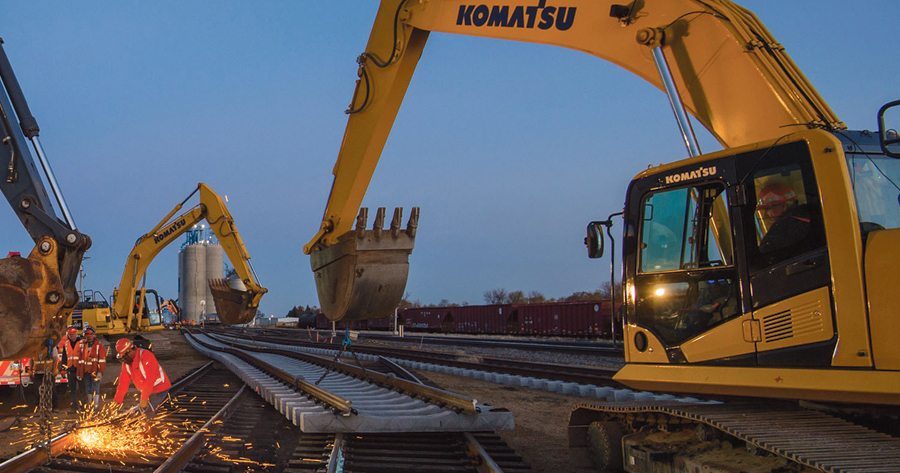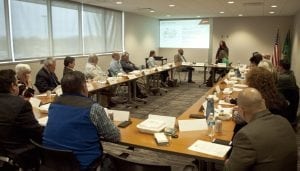
Home » Pasco train congestion could be improved with new Idaho bridge
Pasco train congestion could be improved with new Idaho bridge

April 12, 2018
Coalition of Washington business group supports $10 million project
Planning is underway to build a new BNSF Railway bridge in Idaho that’s expected to improve train traffic in Pasco.
BNSF Railway and Keep Washington Competitive representatives met recently in Pasco about the project. The permitting process is moving forward on the $100 million Sandpoint Junction connector project to build a second adjacent rail bridge to span Lake Pend Oreille in Sandpoint, Idaho.
The Keep Washington group is a coalition of business, labor, agriculture and trade organizations, and leaders promoting trade growth in the state.
Supporters say the bridge will enable train traffic to move in both directions simultaneously, easing a major choke point on a key northern corridor route for the Columbia Basin and especially BNSF’s 32-track, freight classification hump yard in Pasco, where train cars are organized to form new trains.
Project opponents have cited concerns about water quality, safety and other environmental issues.

BNSF spokeswoman Courtney Wallace said three tracks converge in Sandpoint and are reduced to one track in one direction over a mile-long trestle crossing Lake Pend Oreille, leading to long wait times on both sides of the bridge.
Wallace said this often leads to back-ups, which can extend into Washington and Montana.
And with double track expansion projects planned in the future on the Spokane and Kootenai River sides of the current bridge, it’s become increasingly imperative for a second bridge to be built, she said.
An additional bridge “will help relieve that congestion. … We’re not going to have trains idling and hanging out in the yard here in Pasco. So, it means that folks who … need to get their goods to Chicago and elsewhere or out to the port, their trains aren’t holding because of a backup,” she said.
Wallace said the new bridge will not only improve the flow of rail traffic, but also provide greater rail capacity along that line now and into the future for both industrial and passenger train traffic.
BNSF employs about 3,700 workers in Washington, operates 1,332 miles of track and transports 1.6 million or more car loads annually. About 500 of those employees work in the Pasco area.
BNSF submitted applications and permitting packages to the state for the project in December. Wallace said the goal is to start building the new bridge in 2019, after the completion of the 18-month permitting process.
BNSF hopes to open the bridge in 2020.
The Idaho Department of Lands scheduled May 23 public hearings on the BNSF’s applications in Ponderay and Sandpoint, Idaho. The agency will accept all public comments on the application. Comments can be emailed to comments@idl.idaho.gov or submitted through its website at: idl.idaho.gov/comment.html.
Keep Washington Competitive has a ready-made letter that supporters can send on its website at keepwashingtoncompetitive.com.
Other BNSF projects
In addition to the Sandpoint Junction project, BNSF has $160 million in infrastructure improvements planned throughout Washington this year.
This includes installation of mandated positive train control, or PTC, technology, which must be in place by the end of this year, Wallace said.
PTC is an onboard and trackside automated system designed to prevent collisions and derailments by synthesizing data pulled from defect-detecting wayside devices installed along the track and autonomous track geometry cars, which record data about track conditions.
PTC transmits data using GPS, Wi-Fi and high-band radio transmissions.
Wallace reported that 100 percent of BNSF’s required locomotives had been equipped with the technology as of Dec. 31, 2017, and that all PTC infrastructure is installed for those routes, including radio towers.
As of Jan. 2, 2018, Wallace said more than one million service trips had been operated by BNSF using PTC and 80 percent of BNSF’s freight volume moves on PTC routes.
She said that BNSF continues to work with the Federal Railroad Administration to enhance safety standards, including the testing of BNSF’s PTC system with other railroads.
Local News Transportation
KEYWORDS april 2018




